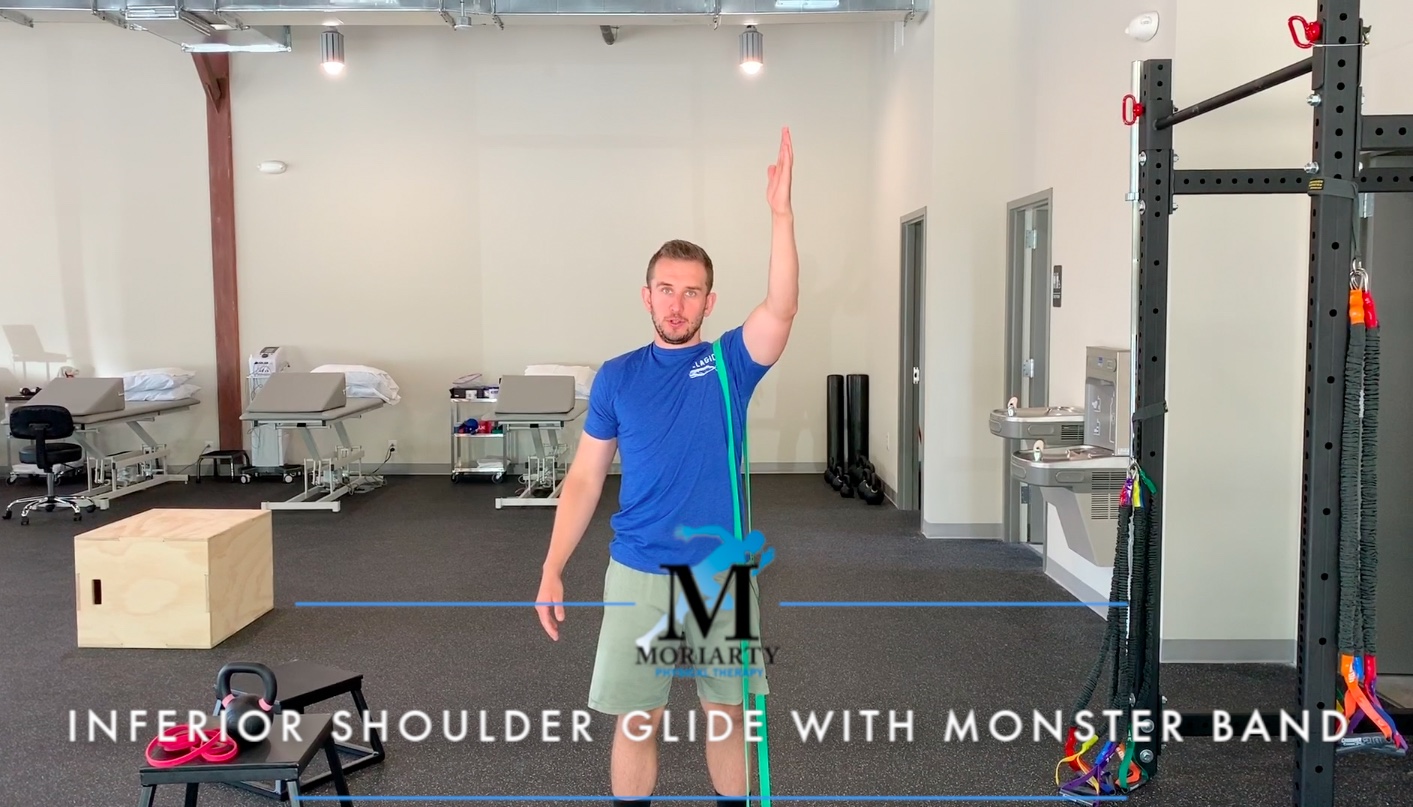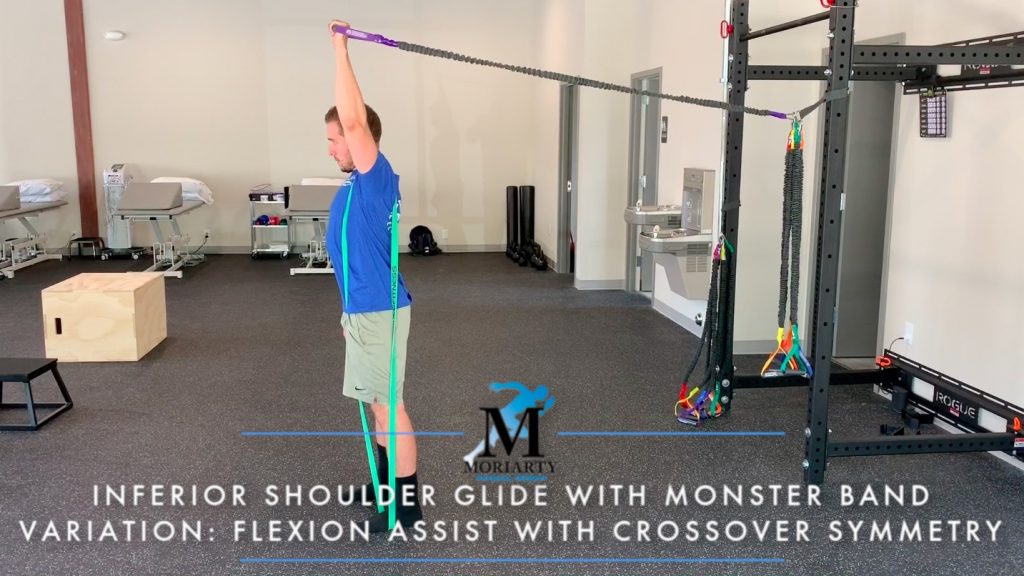
Inferior Shoulder Glide with Monster Band – Mobility Minute
Inferior Shoulder Glide with Monster Band
The Inferior Shoulder Glide with Monster Band can address limitations in shoulder mobility. This self mobilization can help increase range of motion in shoulder flexion in both surgical and non-surgical patients. Athletes and non-athletes alike can benefit from this movement to improve shoulder kinematics and alleviate pain and dysfunction associated with poor shoulder and scapula mobility.
Shoulder Impingement
A common term used as a diagnostic term for shoulder pain with overhead activities is shoulder impingement. Shoulder impingement is a loose term to define entrapment or “impingement” of one of the rotator cuff muscles between the head of the humerus and the acromion of the scapula while performing overhead activities. There are many reasons why shoulder impingement occurs in the shoulder, however, the most common reason is a result of poor scapulahumeral (upper arm and shoulder blade) rhythm while performing shoulder flexion and abduction. All populations are susceptible to this mobility dysfunction in the shoulder, and without proper management and treatment can result in pain, decreased range of motion, and possible future rupture of a rotator cuff muscle.
Self Mobilization
This inferior glide performed with a monster band is not a complete solution to the problem, however, can mitigate some of the joint mobility dysfunction that occurs with overhead activities. The band helps early elevation of the humerus and excessive elevation and upward tilting of the scapula during shoulder flexion. The inferior glide is not necessarily “moving” these structures, but giving the neurological system feedback to facilitate movement in the appropriate plane. Usually patients who have a “pinching” sensation at the top of the shoulder with overhead activities will get almost an immediate reduction in pain in the shoulder with this mobilization. A variation of this mobilization is to initiate either resistance, weight, or prompting to assist movement. The variation pictured below is an assist to help increase shoulder end range while the inferior glide is performed.
